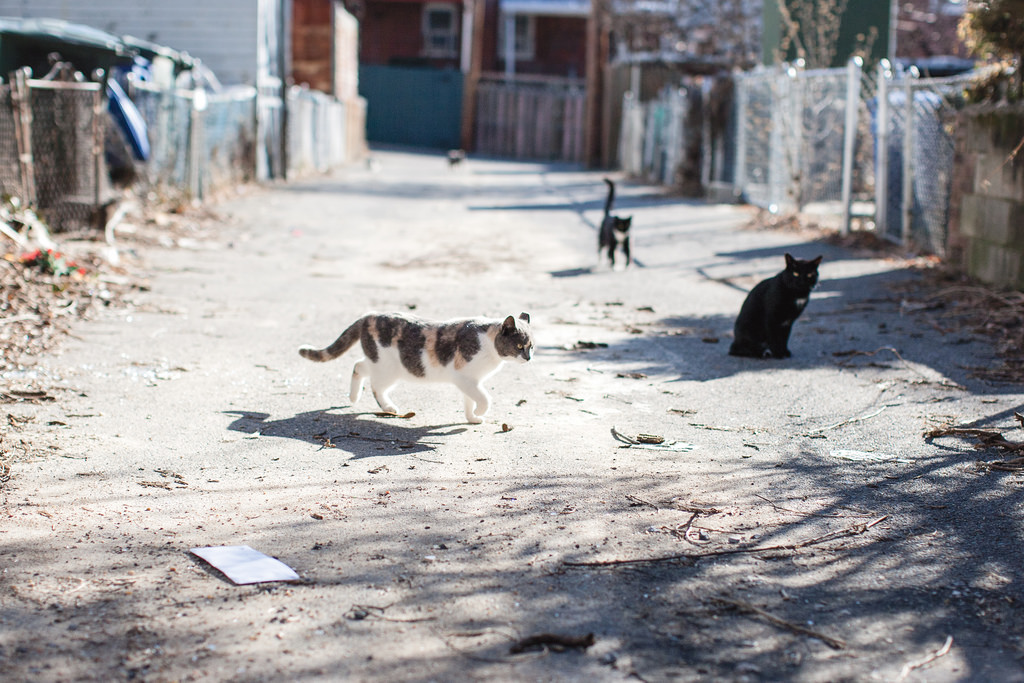In the days leading up to the 2014 Winter Olympics in Sochi, the Russian government hired a private company to cull stray dogs roaming the newly-constructed Olympic Village. Several hundred stray dogs were killed, according to news accounts.
The step shocked animal-lovers around the world. ESPN’s Keith Olbermann, for example, said the Olympic games were “stained with the blood of thousands of dogs.”
Meanwhile, on the ground in Sochi, volunteers rushed to rescue additional strays and get them to safety. Their hastily-constructed makeshift pens have now been replaced by a solidly-built 250-dog shelter, funded by a Russian billionaire. Several U.S. athletes have extended their stay in Russia to help facilitate the adoption of the remaining dogs by working with international animal rights groups.
While the District’s problem with strays is not apparently on the same scale as Sochi’s, animal homelessness is still a very real issue.
Each year, nearly 4,000 stray animals find their way to the Washington Humane Society. The reasons for an animal’s entry to a local shelter such as the WHS are varied. Some are pets, surrendered by their owners. Others are strays, brought in by concerned citizens. Regardless of the circumstances, the WHS accepts these animals.
“We accept any animal, for any reason,” according to ChristieLyn Diller of the WHS. To help make her point, Diller recounts the story of the time last year when the WHS found itself in the possession of 100 chicks. The baby birds had been mis-routed to D.C. by the United States Postal Service. All the chicks eventually found a new home at a New York farm sanctuary.
And unlike Sochi, the D.C. area already has a broad network of shelters and animal welfare groups working to find humane responses to animal homelessness. The Washington Humane Society, the Washington Animal Rescue League, Friends of Homeless Animals, the Animal Welfare League of Arlington, and Alley Cat Allies are just a few local groups that dedicate their resources towards improving the lives of animals, homeless or otherwise.
While these groups are independent of one another, they often work together when needed. For example, the Washington Animal Rescue League houses adoptable animals that come from local shelters, such as the WHS, when space is limited. Likewise, a portion of the adoptable animals at the Animal Welfare League of Arlington come from rural shelters.
“Our concern is for the best interest of the animal and their quality of life. We work with a large network of rescue partners, both locally and across state borders,” according to Kerry McKeel of AWLA.
While adoption is the desired goal, sometimes animals are euthanized, she acknowledged.
“AWLA is an ‘open-access’ animal shelter, meaning that we take all animals, for any reason. We never euthanize animals due to space. However, we do euthanize for medical or behavioral reasons,” McKeel said.
Diller said WHS sometimes must also take that step.
“An animal will stay as long as needed and [until it’s adopted]. However, if an animal is too unhealthy, sick, or severally injured, we do sometimes have to euthanize them.”
While some groups see it as their mission to safeguard the future of all types of animals, others take a narrower focus.
A few local groups concentrate specifically on helping feral cats. In many cities in America and around the world, feral cat colonies abound in alleys and parks.
The District is no exception. In response, some local groups have launched “trap-neuter-release” or TNR efforts. A shelter will target a particular colony of cats, trap them safely in wire cages and have them neutered or spayed.
Kittens and young cats that appear adoptable are found homes. Older cats who are less socialized are re-released to the wild. The end result is a colony of cats that cannot reproduce, thereby helping to ensure the population does not increase.
According to Diller, the program has been very successful: “Officers have noted a decrease in the number of feral cats they see. Last year alone we brought in over 2,000 cats from Northeast D.C. [to be sterilized and released]” This year, her group is hoping to shift its focus to another part of the city.
Rachel Gorlin, who has been caring for a number of colonies near Takoma Park, has noticed a dramatic decrease in the number of kittens over the past year, which she believes to be the result of TNR. By partnering with local shelters, Gorlin has ensured nearly all the cats she cares for are neutered or spayed.
Whether the cats are returned to their colonies or given homes, the overall goal of TNR programs is to lessen the suffering of stray cats.
“Life for strays is uncertain. The weather, certain predators such as raccoons, and starvation make their lives difficult,” noted Stephanie DeMoss of the Washington Humane Society’s Community Cats Program. Her concern reflected the urgency her group finds in its mission: to ensure a humane and safe future for cats, homeless or otherwise.




